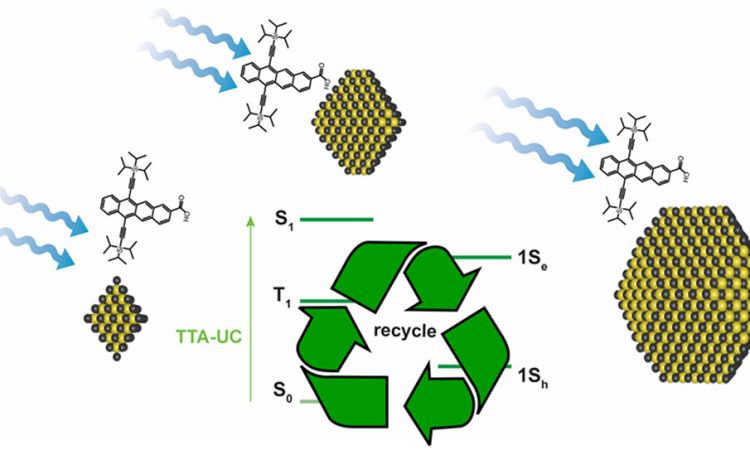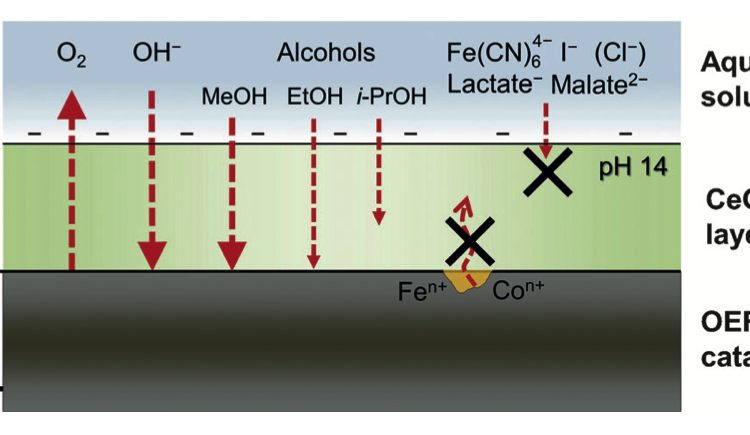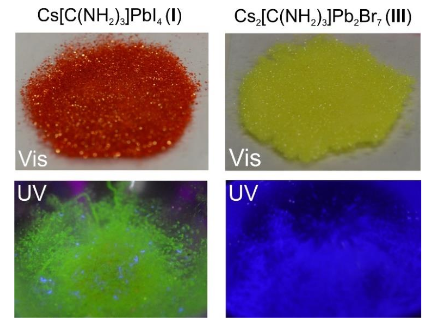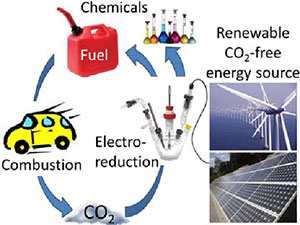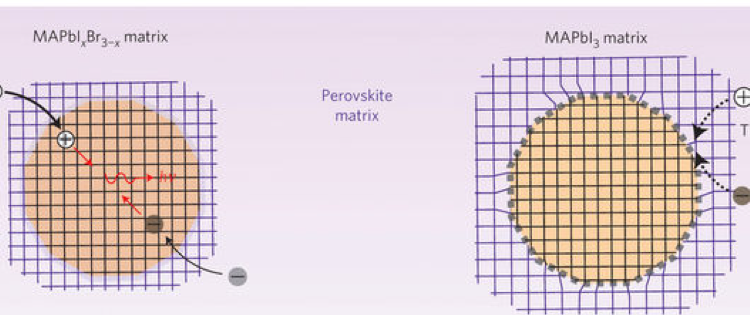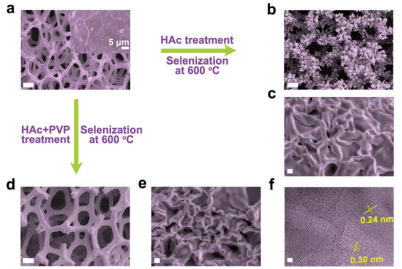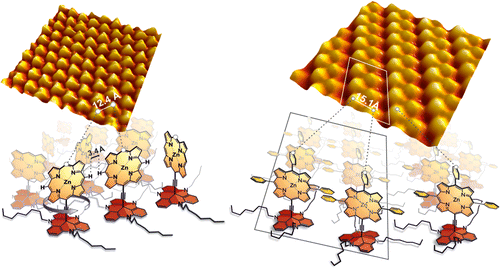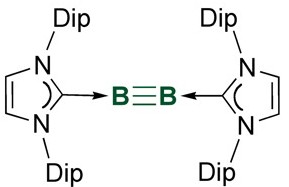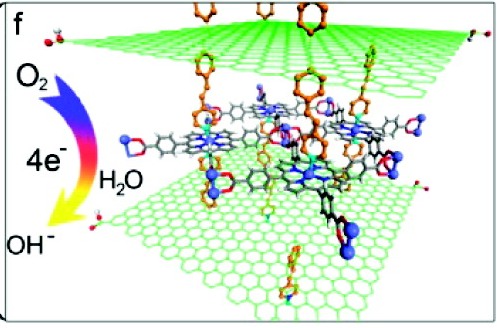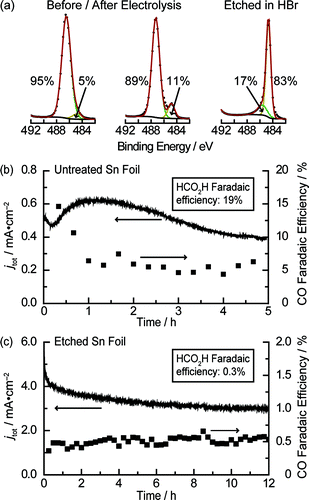Quantum dots are fascinating super small solids. Highly conjugated tetracene is an electronically active organic molecule. When these two are mixed, electrons bounce around in amazing ways and these researchers found out how.
Always Use Protection: Preventing Catalyst Degradation with Coatings
Catalysts are critical components of many industrial processes. Unfortunately, many promising catalysts degrade over time. Here, researchers show that some catalysts can be protected by coating them with another material.
Structure-Function Relationship in a Highly Efficient CO2 Reducing MOF
A structure-function relationship has been established for a cobalt containing Metal Organic Framework (MOF) that catalyzes carbon dioxide reduction very efficiently. It has been established that the hydroxyl groups coordinated to the metal co-operates to enhance the catalysis by forming H-bond network with CO2. Let’s learn how the authors performed a systematic and thorough investigation on these MOFs.
Designing and Understanding New Semiconductor Crystals
Solar panels are expensive because of the high-purity silicon present in them. A new material called perovskite rivals the solar conversion efficiency of silicon, but at a fraction of the cost. There is however still a lot of fundamental understanding to be done on perovskites, which these researchers do by studying analogous structures.
Looking inside your TV
Ever wondered how the images on your TV or computer screen are formed? Today let’s look inside your TV and learn about the nanoparticles forming the high definition display! (Obviously without slicing it open!)
Using Heat to turn Water into Fuel
The development of clean, efficient, and renewable forms of energy is a critical scientific challenge. Plants have already figured out how to do this via photosynthesis. Can we develop a process that mimics this?
Versatile Surfaces: How to Enhance the Role of Quantum Dots in Photocatalysis
There are lots of ways to use sunlight to achieve sustainable energy goals. Photocatalysts, which can use sunlight to power useful chemical reactions, are of great interest for the production of solar fuels like hydrogen. Read more about how we can use novel nanomaterials as photocatalysts in this Chembite!
Scratching the Surface: Subsurface Hydrogen Aids CO Hydrogenation to Methanol With Nickel
In today’s Chembite we appreciate and explore some remarkable mechanistic aspects of the hydrogenation of CO at a nickel surface. The paper covered gives the first account of catalytic methanol and formaldehyde production from CO by Ni. But to explain why we need to go deeper than the surface…
Machine Learning for Understanding Materials Synthesis
Title: Materials Synthesis Insights from Scientific Literature via Text Extraction and Machine Learning Authors: Edward Kim, Kevin Huang, Adam Saunders, Andrew McCallum, Gerbrand Ceder, and Elsa Olivetti Year: 2017 Journal: Chemistry of Materials The sheer volume of publications makes scientific literature a vast sea of information…
Creating Fuels from CO2
Chemists are finding new ways to create fuels from species that are otherwise harmful to our environment! This article looks into how we study these processes and what can be learned about the details of the chemistry.
Using Green Chemistry to Make Fertilizer from Minerals
One of the most important types of chemicals in agriculture is fertilizer. This paper shows a new way to cleanly make fertilizer from a very common mineral!
The Frustrations of Dihydrogen Activation
Dihydrogen stores a lot of energy. How can we control the release of energy so we can use dihydrogen as a fuel of the future? A little frustration can help.
Novel Materials for Next-Generation LEDs: Embedding Light-emitting Quantum Dots in a Perovskite Matrix
Light-emitting diodes (LEDs) already bring cheap and versatile lighting to people across the world, but the latest technological advances are even more promising, embedding nanocrystals in a perovskite matrix for better LEDs.
Efficient Water Splitting Brought to You by Nickel Foam
We’d love to run cars on hydrogen, spitting only water out of the tailpipe. To produce cheap hydrogen in a green way, these researchers have developed a surprising new material to split water into hydrogen and oxygen.
Carbon Monoxide: Future Therapeutic?
Carbon monoxide is probably one of the last things you would expect to see touted as a new therapeutic. How could this compound be used in medicine?
Electrochemical Capture and Release of Carbon Dioxide
Title: Electrochemical Capture and Release of Carbon Dioxide Authors: Joseph H. Rheinhardt, Poonam Singh, Pilarisetty Tarakeshwar, and Daniel A. Buttry* Publication Info: ACS Energy Lett., 2017, 2 (2), pp 454–461, DOI:10.1021/acsenergylett.6b00608 This article is a perspective from recognized experts in the field of CO2 capture and release.…
The Era Beyond Fluorescence and Phosphorescence – Thermally Activated Delayed Fluorescence
Advances in knowledge about light emission have brought breathtaking innovations in lighting and display technologies. The well-known light-emitting processes are fluorescence and phosphorescence. Let’s take a closer look into their dynamics and another light-emitting process: Thermally Activated Delayed Fluorescence (TADF)!
Stacks on stacks on stacks
Finding ways to create order is a common theme in science. Here researchers are trying to carefully arrange chromophores in order to create better solar cells (among other potential uses). In particular, these chemists are trying to make porphyrins stand up on a surface creating stacks of porphyrins that are a well defined distance from each other and from the surface they are attached to.
Questions are raised about “unclick” reaction
Click chemistry, a term used to describe a number of high yield reactions, is used far and wide by chemists. The azide alkyne Huisgen cycloaddition typifies click chemistry and awhile back, I described it as my favorite reaction.
A Simple Organometallic Fluoride Sensor
Title: Stibonium Ions for the Fluorescence Turn-On Sensing of F– in Drinking Water at Parts per Million Concentrations DOI: 10.1021/ja308194w Author: Iou-Sheng Ke a, Mykhaylo Myahkostupov b, Felix N. Castellano *b, and François P. Gabbaï *a Journal: Journal of American Chemical Society Affiliation: a) Department of Chemistry, Texas A&M University, College…
Ambient-Temperature Isolation of a Compound with a Boron-Boron Triple Bond
Title: Ambient-Temperature Isolation of a Compound with a Boron-Boron Triple Bond DOI: 10.1126/science.1221138 Author: Holger Braunschweig, Rian D. Dewhurst, Kai Hammond, Jan Mies, Krzysztof Radacki, Alfredo Vargas Journal: Science Affiliation: Institut für Anorganische Chemie, Julius-Maximilians-Universität Würzburg, Am Hubland, 97074 Würzburg, Germany Take-home Importance According to the Authors: Homoatomic triple…
Electrocatalytically Active Graphene–Porphyrin MOF Composite for Oxygen Reduction Reaction
Title: Electrocatalytically Active Graphene–Porphyrin MOF Composite for Oxygen Reduction Reaction DOI: 10.1021/ja211433h Author: Maryam Jahan, Qiaoliang Bao, and Kian Ping Loh Journal: Journal of the American Chemical Society Affiliation: Graphene Research Centre, Department of Chemistry, National University of Singapore, Singapore Take-home Importance According to the Authors: By reacting the pyridine-functionalized graphene with…
CO2 Reduction on Tin Electrodes and Enhanced Activity for Tin/Tin Oxide Thin-Film Catalysts
Title: Tin Oxide Dependence of the CO2 Reduction Efficiency on Tin Electrodes and Enhanced Catalytic Activity for Tin/Tin-Oxide Thin Film Catalyst DOI: 10.1021/ja2108799 Author: Yihong Chen and Matthew W. Kanan Journal: Journal of the American Chemical Society Affiliation: Department of Chemistry, Stanford University, Stanford, California, United…
Copper (I) Hydroxide–Cuprice
Chemists probably would not willingly search for CuOH unless there is some theoretical basis for its existence. Without changing the oxidation states, a readied reaction could be 2 CuOH –> Cu2O + H2O. Its existence has been speculated on, now the really interesting work begins with the compound’s isolation (for a synthetic chemist).
Solid-State Solvatochromism
Title: Ionic Crystals of {[Ni(phen)3]2Ge4S10}-xSol, Showing Solid-State Solvatochromism and Rapid Solvent-Induced Recrystallization Authors: Wen-Qin Mu, Qin-Yu Zhu, Li-Sheng You, Xu Zhang, Wen Luo, Guo-Qing Bian, Jie Dia Journal: Inorganic Chemistry Take Home Importance According to Blogger: A solid material which could rapidly change color depending on what solvent was introduced is…

